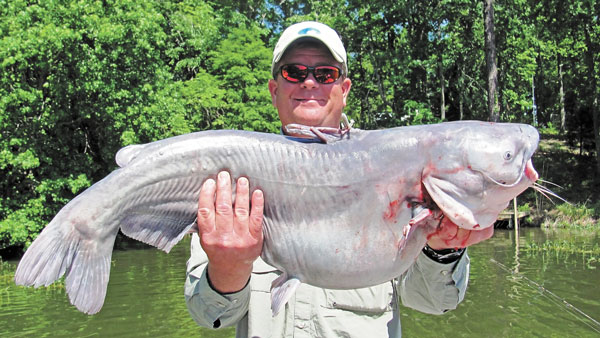
Despite the intense heat and humidity, there’s plenty of ways to be catching fish on the Santee Cooper lakes in August. Sometimes you just have to think a little outside the normal box of lake fishing.
One overlooked fishery for the dog days of August on the Santee Cooper system are the rivers that feed the lakes. While this focuses primarily on the upper end of Lake Marion, the Congaree and Wateree rivers are both potentially very productive for a variety of species.
One of the keys to the fishery and success is that there is often some current in these rivers, which keeps the water more oxygenated. When water is released from Wateree Dam, for example, a number of fish species seem to turn on in the river, including largemouth bass, bream and catfish.
The key is finding the right spots. One area is to fish near the deeper holes in either of the rivers. You may be able to find fish such as bream and largemouth bass in shallow water near the deeper areas. Deepwater access is a key component to success this time of year, especially when the water is not flowing, as it provides a deepwater haven for the fish. Also, these deeper holes are ideal for big catfish, and despite the intense heat, some huge catfish are caught in both rivers. Often the best fishing will be at night, and flathead, blue and channel catfish are all caught in good numbers and sizes this month.
In the lower end of the rivers, where the water gets consistently deeper, you can also find some isolated areas where crappie may congregate. Working downed trees, logs and stumps with small jigs will often produce a mixed bag of crappie, big bream and largemouth bass. Plus, you can often find shady spots to fish for a long period in the mornings and afternoons.
In addition, the Santee and Cooper rivers below the dams on Lake Marion and Lake Moultrie also provide good summer fishing. Both rivers will feature excellent bream, bass and catfish action.
Fishing on the lakes is also good for several species as well. The key is to work around the mid-day heat by fishing early or late or fishing late afternoons and into the night until about midnight.
On Lake Moultrie, drift-fishing for big catfish is actually very good during August, with most of the action in deeper water. Guide Marlin Ormseth (843-825-4713) will drift the deeper drops and ledges with a variety of cut baits. He usually gets on the lake late in the afternoon and fish until midnight or until his cooler is full of fat catfish.
“Sometimes, we’ll get a pretty gusty breeze in the afternoons, but generally by the time the sun gets low, the wind drops a bit and the air temperature gets fairly comfortable,” Ormseth said. “Plus, it’s about that time the big fish bite begins to turn on. The fish are actually feeding a lot at this time of the year; the water temperature is high and their metabolism is high. The key is to target the right depths and structures to find the fish. They will usually be holding on humps, drops and ledges anywhere from 20 to 35 feet dee or deeper. But a key component of success will be finding areas where there is plenty of baitfish present.”
Best baits will include cut shad, herring, perch and bream, according to Ormseth.
“I’ll use a variety of baits until I find the one that seems to produce best for the given day and evening we’re fishing,” he said. “Depth and bait preferences will change from day to day.”
Another note of interest in the catfishing world is the potential for the Diversion Canal to really turn on. If there is substantial rain from a large cluster of thunderstorms or even a tropical system, there will be current in the Canal. When that occurs this time of the year, the catfishing will usually be excellent.
Largemouth bass are also a good bet in both lakes with relatively shallow water the key to success. But the specific key will be fishing tight to cover in water from five to 10 feet deep. Bottom-bumping baits such as the Carolina- or Texas-rigged worms as well as crankbaits will produce good results. Typically, a few schooling fish will also begin to be taken on topwater lures.
Crappie fishing is also good around brushpiles in 12 to 20 feet of water during the day with live minnows. Also, fishing at night under the lights will produce crappie and catfish action.




Be the first to comment